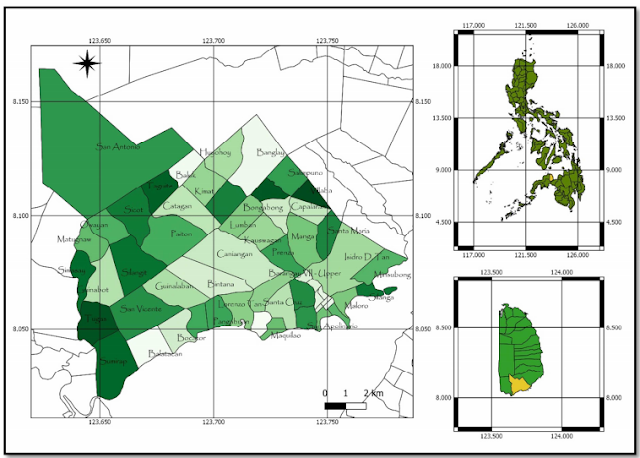Erlyn B. Ladesma , Quineybel N. Mag-usara , Lea Mae G. Matu-og , and Monaliza Joy Zaragoza-Magsayo from the different institute of the philippines wrote a research article about "Dengue Epidemiology: Seasonal Trends in Tangub City"entitled Seasonal variability on the epidemiology of Dengue in Tangub City, Misamis Occidental, Philippines, this research paper published by the International Journal of Biosciences |IJB an open access scholarly research journal on Biology under the affiliation of the International Network For Natural Sciences | INNSpub an open access multidisciplinary research journal publisher.
Abstract
Seasonal variability
contributes to the abundance of dengue mosquito vector. In this study, the
prevalence rate of dengue on different seasons, by population characteristics
and geographical location in the City of Tangub were determined. Dengue cases
and climatological information from 2016-2021 were obtained through secondary
data gathering. Based on the data, dengue cases are highest on the year 2019.
Specifically, dengue was more prevalent during rainy period. In terms of gender
and age, males with ages of 10 to 19 were more prone to contracting dengue.
Notably, for the last six-years dengue was predominant in built-up areas. The
association between climatological factors and dengue incidence was further
determined. On hot season, the heat index (-0.12) and precipitation (-0.04) is
negatively correlated to dengue cases. While heat index and dengue cases on
rainy season have no correlation, precipitation revealed a weak positive
correlation (0.04) towards dengue infection. And on cool-dry season, heat index
and precipitation showed a weak positive (0.4) and weak negative correlation
(-0.10) to dengue cases, respectively. Generally, the climatological variables
show no significant correlation (p>0.05) towards dengue cases. This paper
revealed that dengue is highest during rainy days however, climatological
factors are not reliably considered as effective predictors to dengue cases.
Introduction
Dengue is a significant health challenge that is widespread in more than a hundred nations encompassing an estimation of three hundred ninety (390) million infected individuals annually (Bhatt,2013). Transmission of dengue viral infection are carried by the family Flaviviridae specifically dengue vector Aedes mosquito (Edillo, 2012). The annual infection rate of dengue still increases due to factors such as population growth, urbanization, inadequatepublic health infrastructure, poor solid waste management, and inconsistent preventive practices (Aurelio et al., 2018). According to World Health Organization (2014), Philippines rank fourth among the ten Southeast Asian Nations at higher risk of dengue infection. In fact, dengue had become endemic in different regions and results to a major public health problem in the Philippines (Herriman, 2017).
Furthermore, the virus disproportionately affects children and young people, with 73% of recorded cases under the age of 19 (Muyot, 2019). In contrast, epidemiological review of Bravo (2011) shows that prevalence rate was highest among children ages between 5-14 years old and over 80% of dengue-related deaths in the Philippines occurred among people under the ages of 20. For the prevalence rate of dengue cases based on gender, according to the data reported by the national surveillance systems adolescent and young adult males are found to be athigh risk of dengue (Arima, 2011). Gender differences in reported dengue surveillance data may be due to the exposure-associated behaviors or activities, such as working-age males exposed to outdoor environments during the day when dengue virus-infected Aedes aegypti mosquitoes are active (Yew et al., 2009; Prasith, 2013). The difference in the male to female morbidity rates was associated with the difference in the proportion of working males and females, indicating that the risk of dengue increased with the increasing time spent away from home (Ooi, 2006).
Seasonal variability encompasses climatological factors such as temperature, humidity, and precipitation contribute to the abundance of denguevector (Xu et al., 2017). Southeast Asian countries potentially have a high risk of dengue transmission due to its subtropical humid monsoon climate (Halstead,2006). In the Philippines, dengue is considered as seasonal occurring diseases as it is notifiable during the rainy and cool-dry season (June-February). According from the studies of Wai et al. (2012) and Tsuzuki et al. (2009), rainy and dry seasons has a tendency to increase mosquitos' activity in growth, survival, and transmission as both seasons serve as a good breeding site for their growth and development.
The warming of
the climate increases
the risk of dengue transmission. Some areas in Tangub
City havebeen affected by
changes in the
weather patterns which result in
extreme heat and heavy rains that lead to flooding incidents. This phenomenon
significantly influences the dengue
mosquito vectors’ replication, growth, and
rapid transmission. Tangub
is also considered as a growing
city due to
its increasing population and
building of infrastructures like the on-going
project of Panguil
Bay Bridge. Similarly,
theanticipated urbanization may
lead to the
resident’spoor solid waste
management practices. These contributing factors are evident in the
city, resulting to an adaptive habitat of dengue. At present, no study has been
conducted related to seasonal occurrences of dengue in
Tangub City. In
this context, this
study intends to interpret which season dengue is prevalent,
determine the age
and gender that
are more susceptible to
dengue infection and
identify the geographical area
prone to dengue.
The findings of this study will serve as basis for the
local governments to enhance formulated
preventive measures and create
strategic plan to
raise community awareness subsequently, improving
both preparedness and response activities during dengue
outbreaks. Check out more by following the link













%20in%20full.JPG)

